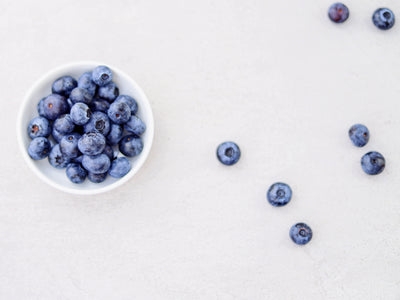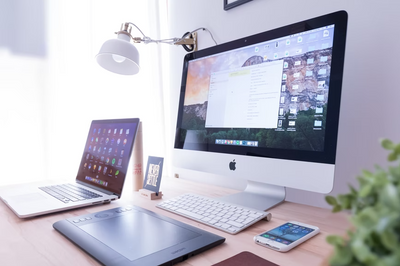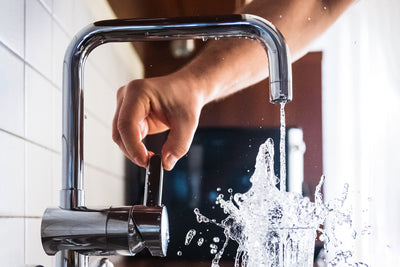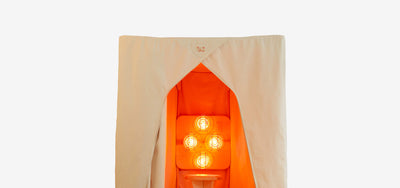How to Reduce Your Body’s Toxic Load: Part 2

Conscious Spaces Detox Special
In the New Year spirit of fresh starts and clean slates, we’re serving up a rejuvenating detox special: a series of features focused on what contributes to your toxic load, and – most importantly - practical, positive advice on ways you can work to dramatically reduce it, with almost immediate effect.
Tactic Number Two:
DETOXIFY THE CONTENTS OF YOUR BATHROOM CUPBOARD
Have you ever looked at the ingredients list of your exotically scented shampoo, scrutinised the label of your deodorant, or considered what makes your foundation formula so smooth? If the answer is no, then now might be the time to start taking more notice.
Our ever-expanding arsenal of personal care and beauty products - moisturiser, bath foam, face wash, nail polish, shaving gel, makeup, hairspray, perfume – expose us to a daily cocktail of synthetic chemicals which experts are concerned could increase our toxic load, causing long-term damage.
Dr Vyvyan Howard, a toxicologist at Liverpool University, feels that there should be more transparency around product ingredients, telling the Guardian (1) “some of the ingredients in cosmetics are trade secrets so we never get to know about them. It's rather unregulated and very secretive and it's very easy for chemicals to cross the skin and get into the bloodstream. Once someone has become sensitised to a substance it's a one-way trip and there's no going back."
Illustrating Dr Vyvyan’s point, a recent study published in JAMA (2) found that chemicals contained in commercially available sunscreens are absorbed into the bloodstream at concentrations “that exceed the threshold established by the FDA for potentially waiving some nonclinical toxicology studies”.
As a general rule, the more observant you can be about what you’re putting on your skin, nails and hair, the more control you have in reducing your chemical load.
The five key chemical ingredients to avoid
Some of the most toxic (and unfortunately most common) chemicals to watch out for on product labels are:
- PARABENS: hormone-disrupting (3) chemicals used as preservatives. Indicated by any word ending in paraben, such as methylparaben or propylparaben. Found in moisturisers, deodorants, toothpaste.
- PHTHALATES: endocrine-disrupting, infertility (4) and cancer-linked (5) substances used to soften plastics, dissolve fragrances, thicken lotions and improve skin penetration of cosmetics - often abbreviated to DBP, DEHP and DEP. Found in nail polishes, hairsprays, perfumes.
- SODIUM LAURETH SULFATE: usually shortened to SLS and often contaminated with 1,4- dioxane, a known carcinogen. Can cause skin allergies and irritation. (6) Found in hair dye, cosmetics, shampoo, hand sanitizer, shaving cream.
- TRICLOSAN: an anti-bacterial agent which produces toxic dioxins in its manufacture.(7) Triclosan isn’t always shown on labels but, if it is, it may be referred to as 5-chloro2-(2,4-dichlorophenoxy)-phenol. Found in hand wash, toothpaste, deodorant, mouthwash.
- FRAGRANCE: avoid anything that simply notes ‘perfume’ or ‘fragrance’ as an ingredient, as this can be brands’ way of hiding a multitude of chemical sins in one catch-all, consumer-friendly phrase.
Between them, these commonly-used chemicals have been scientifically linked with infertility, liver damage, asthma, breast cancer, developmental issues, obesity, underactive thyroid, kidney damage and skin allergies. Parabens alone have been associated with cancer, weight gain, reproductive problems and reduced muscle mass, and have been shown to mimic oestrogen in the body – thereby potentially disrupting normal hormonal function.
See how your products rank for safety
To find out more about what’s in your personal care products, visit The Environmental Working Group’s online ‘Skin Deep’ database, (8) which ranks individual products on a numerical scale, with 1 being the cleanest. You might be surprised (and probably not in a good way) at the results. BUT things are changing, and the clean beauty industry is booming.
Be a natural beauty
When looking for safer alternatives, the most important products to focus on are those that you use every day. For most people, this is usually deodorant, shampoo, conditioner, toothpaste and face creams. Get creative, go back to basics and look to nature for inspiration. Try using organic coconut oil as a moisturizer, make-up remover and to nourish dry hair. Replace perfumes with essential oils. Give natural deodorants and toothpastes a go. Switch from face creams to luxurious organic face oils like rosehip or avocado.
Clean beauty enthusiast and Conscious Spaces Founder Tara is passionate about finding non-toxic products that are not only gentle and pure, but effective too. Revealing the clean beauty brands she rates, she says: “I like everything Antipodes, Neom and Vintner’s Daughter do (although Vintner’s Daughter is definitely on the pricey side!). The Natural Deodorant Company was a revelation, and I also have some great products from Oskia, Living Libations and Inlight. However, my absolute must-have is the Pai Rosehip oil, (9) I think it’s the best one I’ve ever tried and it’s excellent on fine-lines, dry skin and sun spots. I still find myself using Dr Hauschka products too, and they were one of the original and few natural beauty brands available decades ago.”
Go green when you clean your home
Just like personal care, cleaning products can also be loaded with a toxic blend of chemicals. Anything anti-bacterial – think handwash, cleaning sprays and hand sanitisers - raises a particular red flag, as if it’s capable of killing ‘bad’ bacteria or germs, it’s probably destroying all the beneficial bacteria too. This all or nothing approach to cleaning promotes an artificially sterile environment that could be contributing to the growth of antibiotic resistant bacteria, so should be used with caution.
Many antibacterial products also contain the harmful petrochemical triclosan, as well as sodium laureth sulfate (both already mentioned above as ingredients to be wary of) and the allergy-causing preservative methylisothiazolinone – not to mention potent dyes and artificial fragrances. Other popular household cleaning products often contain irritants like ammonia, chlorine and solvents.
The natural alternatives making a comeback
Fortunately, there are some great green options available, from lovingly crafted, versatile soaps to natural sprays. Just be on your guard for greenwashing and clever PR – if a supermarket product sounds too good (or cheap) to be true, unfortunately it probably is.
For a surprisingly effective - and natural - alternative, you could always try the traditional deep-cleaning ingredients of vinegar, bicarbonate of soda, lemon juice and castile soap. A few drops of tea tree oil or grapefruit essential oil in any solution or spray works to disinfect and gives a wonderfully fresh fragrance. In fact, the internet is brimming with recipes (10) for making your own all-purpose cleaners for every corner of your home, from windows to sinks, floors, worktops and even the toilet. And with each of these beautifully natural, simple ingredients being kind not only to your body, but the planet and your purse too, what more do you really need?
UP NEXT: Our detox special continues with the third instalment of our series on how to reduce your body’s toxic load
References
(1) https://www.theguardian.com/lifeandstyle/2003/feb/25/healthandwellbeing.health2
(2) https://jamanetwork.com/journals/jama/article-abstract/2733085
(3) https://www.ewg.org/californiacosmetics/parabens
(4) https://www.ncbi.nlm.nih.gov/pubmed/22197707
(5) https://www.ncbi.nlm.nih.gov/pubmed/22049059
(6) https://www.bbc.co.uk/programmes/articles/1DjRTHSCZK3h7V6dlxyHRdP/are-my-wash-products-damaging-my-skin
(7) https://www.mayoclinic.org/healthy-lifestyle/adult-health/expert-answers/triclosan/faq-20057861
(8) https://www.ewg.org/skindeep/
(9) https://www.naturisimo.com/products.cfm?id=971&type=Face%20Oils
(10) https://www.theguardian.com/lifeandstyle/shortcuts/2019/jan/13/bicarb-vinegar-lemon-juice-how-to-clean-your-house-even-the-oven-the-old-fashioned-way









































